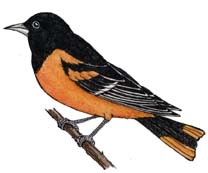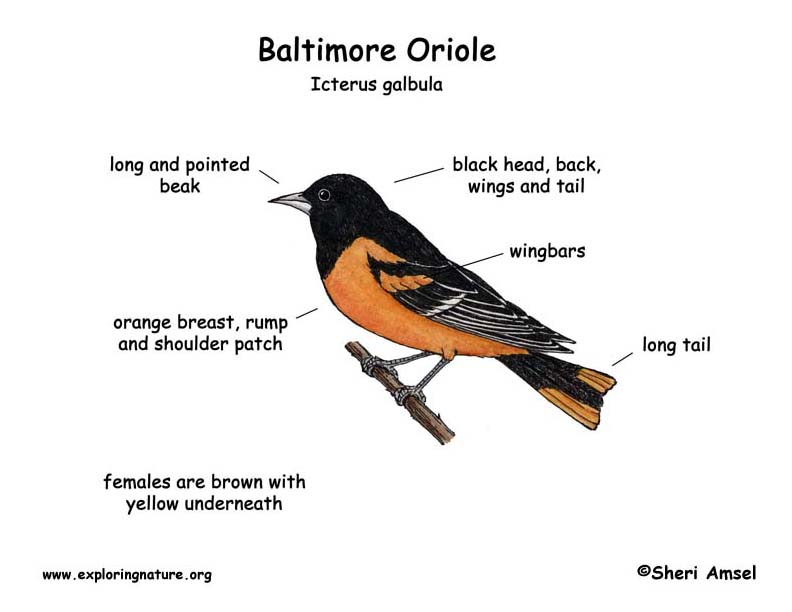

They breed across North America east of the Rocky Mountains. They spend the winters in Florida, the Caribbean, central Mexico, Central America to northern South America.
They live in deciduous forests, and in parks and yards where there are big shade trees.
They have a black head, back, wings and tail. They have an orange breast, rump and shoulder patch. The females are brown with yellow underneath.
They can travel in flocks.
They eat caterpillars, fruits, insects, spiders, and nectar.
Females weave a sac nest from grass, and hair and hang it from the end of a branch at the top of a tall tree. She lays 3 - 7 pale gray eggs streaked with dark lines.
Kingdom: Animalia
Phylum: Chordata
Class: Aves
Order: Passeriformes
Family: Icteridae
Genus: Icterus
Species: I. galbula
When you research information you must cite the reference. Citing for websites is different from citing from books, magazines and periodicals. The style of citing shown here is from the MLA Style Citations (Modern Language Association).
When citing a WEBSITE the general format is as follows.
Author Last Name, First Name(s). "Title: Subtitle of Part of Web Page, if appropriate." Title: Subtitle: Section of Page if appropriate. Sponsoring/Publishing Agency, If Given. Additional significant descriptive information. Date of Electronic Publication or other Date, such as Last Updated. Day Month Year of access < URL >.
Amsel, Sheri. "Oriole (Baltimore)" Exploring Nature Educational Resource ©2005-2024. December 15, 2024
< http://exploringnature.org/db/view/155 >

